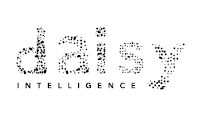
How AI Price Optimizations Drive Maximum Profitability for Grocers
 Daisy Intelligence
Daisy Intelligence
AI-powered pricing optimization is, by now, a proven solution for maximizing profits in the grocery space. By analyzing years of transaction log (TLOG) data to find intricate patterns, we deploy math and science to uncover dynamic relationships between cross-category cannibalization, promotional cadence, product affinities, price sensitivity, and seasonality; enabling grocers to optimize decision-making around promotion, pricing, and inventory forecasting.
While it’s true that powerful technology and “traditional” data analytics software enable grocery retailers to battle it out with competitors on a weekly, daily and even hourly basis, the big question is, does beating competitors on price always lead to higher profits? In other words, how closely is your organization’s pricing strategy aligned to long-term financial goals?
The reality is, most non-AI-powered retail pricing solutions don’t drive maximum chain-wide profitability because its beyond their computational ability to analyze the impacts of cross-price elasticity, cross-promotional elasticity, affinity or halo relationships across multiple products.
The issue here is around historical pricing systems which treat each product like an independent event. There’s a lack of consideration regarding the “halo effect” relationship between products, which in turn ignores product affinities when making price recommendations. For example – consider carbonated soft drinks! What price should we put Coca-Cola (Coke) if our goal is to increase profits? A historical pricing system will generate a price elasticity curve for Coke for that season, for that week, based on historical data. However, it won’t be able to calculate the impact of the Coke price change on ALL of the other items in the carbonated soft drinks category.
It is that sort of insight that a grocer needs in order to determine the key issue - is the price change on Coke actually contributing to the store’s profitability? What if it’s just taking the revenue from other categories, i.e., Pepsi? Or, is the pricing change on Coke simply driving forward-demand for consumers by encouraging them to stock up on Coke at discount prices?
Here’s another example- A grocer knows that if they lower the price of hamburger, they’ll sell more hamburger…but they’ll likely sell less hot dogs, so its’ probably a good decision to forecast down on products such as hot dog buns and sauerkraut. So, if the hamburger prices drop by 10%, how much less hot dog buns and sauerkraut should be stocked?
If we just consider hot dogs, buns, and sauerkraut, all three products come from different suppliers. All three are perishable, and each has a different shelf life. The drop in the price of hamburger may necessitate a decrease in the size of the order for hot dog buns, and while that may impact demand for sauerkraut, because of its longer shelf life, it may be fine to ignore the impact on that product. Continue this line of reasoning across other product combinations, and again, the computationally complex nature around pricing decisions and understanding multi-dimensional impacts or “ripple effects” across other products is clear.
The largest supermarket chains – who already dominate much of the market leveraging their advantages in pricing and positioning themselves as the lowest-priced options in the minds of consumers – as a result of investing billions in AI, are realizing efficiencies that will continue to allow them to drive down prices even further.




